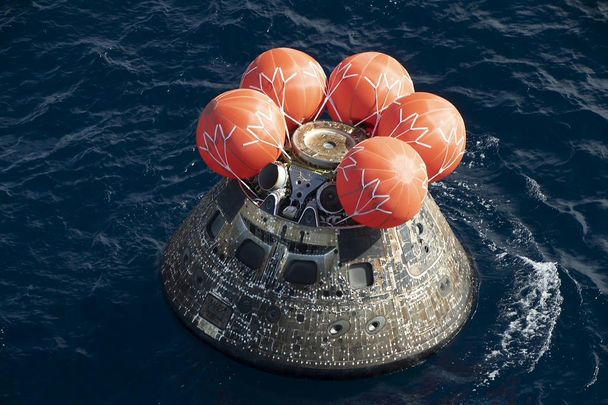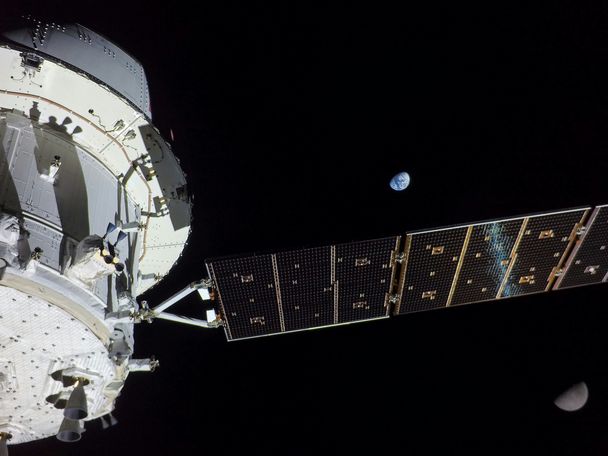What a splash!

We've been working towards this for more than 10 years and now it's done. The Artemis I mission is complete, with the Airbus-built European Service Module having successfully brought NASA's Orion spacecraft safely around the Moon and back home.
Sunday 11 December saw the end of the 25-day long Artemis I mission as the Orion crew module splashed down in the Pacific Ocean. The European Service module’s part of the mission came to an end just 40 minutes before splashdown when it separated from the crew capsule and burned up, as planned, in the Earth's atmosphere. This marked the end of a long journey for the first European Service Module.
Marc Steckling, Head of Space Exploration : "It was a beautiful moment with mixed feelings for us. Our ESM has really done an extraordinarily good job. This is of course thanks to the fantastic work of the whole team - from design to build, test and then providing round-the-clock support to assure this performance during the mission. Nevertheless, we had to say goodbye to our baby, because only the crew capsule returned to Earth. This will happen with every ESM, as they will always burn up in the Earth's atmosphere in a controlled manner."
A brief look into the past, the development and construction was decided in 2012 at the Ministerial Council Conference. Since then, about 1.05 million Airbus working-hours have gone into the module to assemble the 22.000 parts, the 33 thrusters and 12 km cables. For years, it has been put through its paces to ensure it can withstand the adverse conditions in space. But whether everything really works as expected in the end can only be seen under real conditions, when the temperature differences assume unimaginable proportions, the G forces of NASA’s Space Launch System (SLS) and the upper stage burn really act on the structure, and the spacecraft is exposed to the vacuum of space.
It was an extremely exhausting and challenging 25 days for the Orion spacecraft, the European Service Module and the entire team.The spacecraft traveled more than 2 million kilometers, was exposed to temperatures of +- 200 °C and flew at a maximum speed of 40.000 km/h. All systems were tested and for the most part performed even better than previously expected.

Ralf Zimmermann, Head of Moon programmes: "We are happy about the results. We got to know all subsystems, we took the predictions from the development phase which we will now correlate with the measured flight data to refine the design of follow on ESMs. What’s more, with performance demonstrated, exceeding expectations, we had the opportunity to test even more systems than planned - we couldn’t have hoped for more from a maiden flight. "
On Sunday at 18:40 CET the long journey was over and all tasks were successfully completed. The crew capsule landed safely in the ocean.
Even if this sounds like an end, it is just the beginning of a new era, namely the new departure to the Moon. Soon humans will fly around the Moon with Artemis II before we will leave new footprints on the Moon with Artemis III and our ESM will always be there to provide the humans on board with all they need to stay alive things like water, oxygen and the right temperature and ensure they get safely back home.

For more information on Orion European Service Module click here